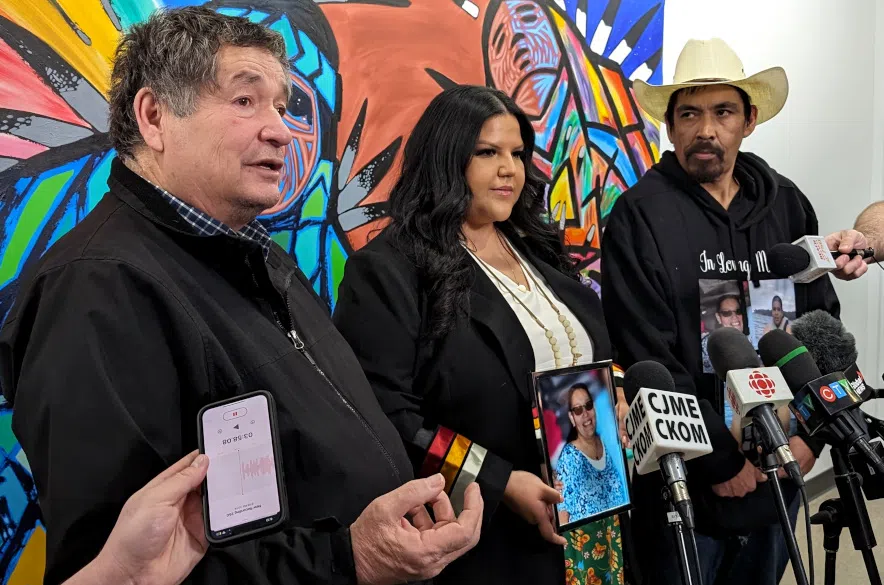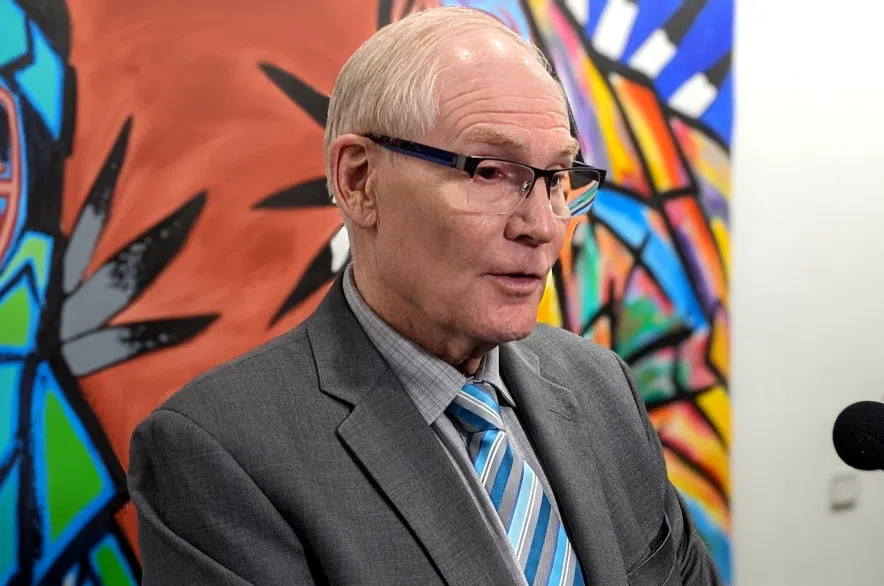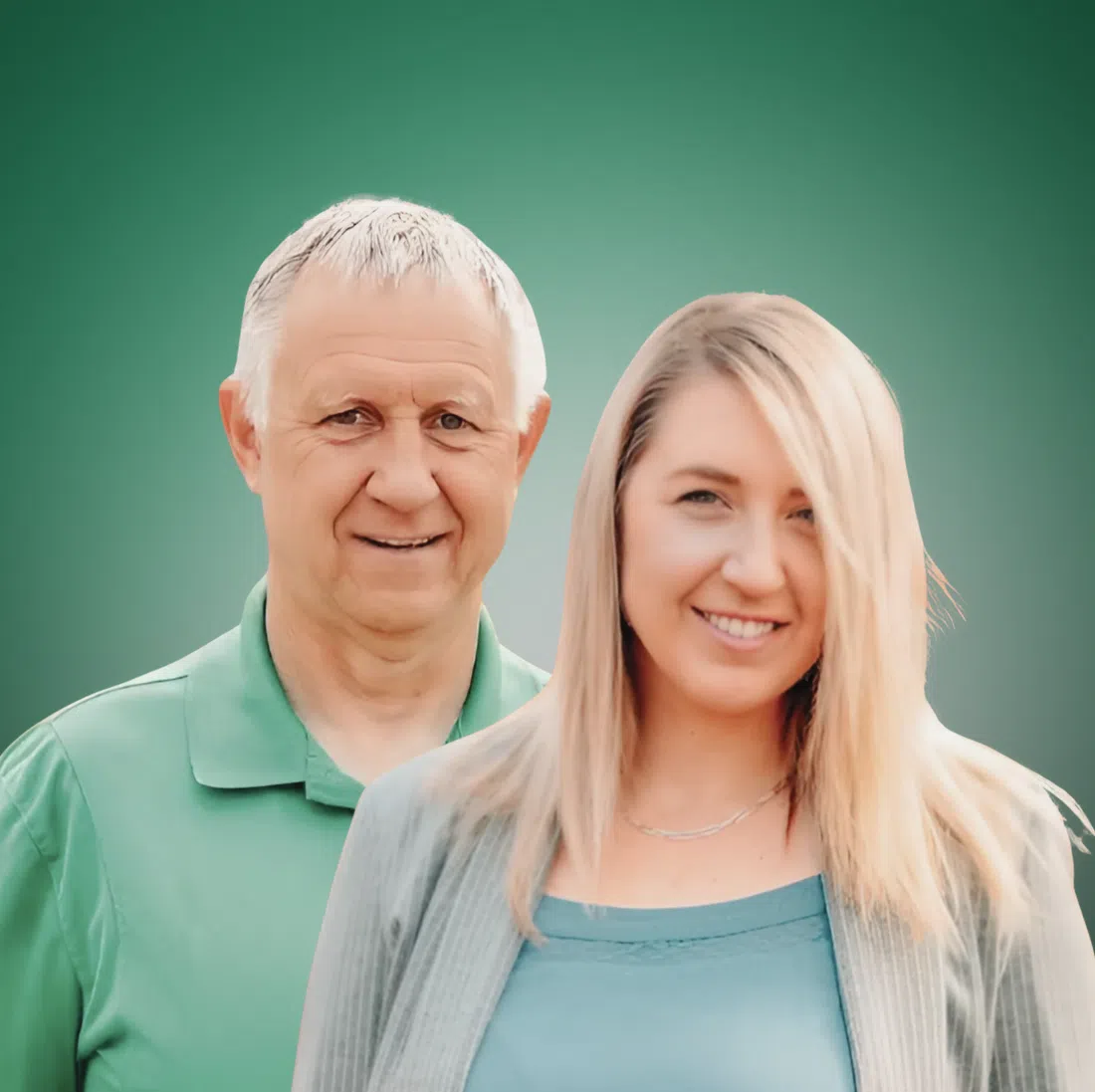Chelsey Stonestand offered one word on Wednesday when asked for her reaction to the jury’s recommendations at the end of the inquest into the mass murders on the James Smith Cree Nation and in Weldon.
“Relief,” said Stonestand, who had standing to represent the family of murder victims Bonnie Burns and Gregory Burns during the inquest.
“We heard (the recommendations) prior to being in the auditorium and I think there was a lot of anticipation and anxiety surrounding what they might be (and) who they were directed to.
“As Indigenous people, we’ve lost hope in the justice system and in other systems that affect our everyday life. But when we sat down with Blaine (Beaven, the presiding coroner) and we heard them, it brought such relief. I can’t speak for everybody, but I felt blown away by all the consideration that was put into it.”
The inquest was called to probe the mass murders perpetrated Sept. 4, 2022 by Myles Sanderson, who killed 11 people and injured 17 others in the stabbing rampage.
Buggy Burns, the husband of Bonnie Burns and father of Gregory Burns, said he was feeling relieved as well.
Some families say they’re relieved after seeing the recommendations from the jury at the James Smith inquest. (L to R: Darryl Burns holding a photo of his sister Lydia Gloria Burns, Chelsey Stonestand holds a photo of Bonnie Burns, Buggy Burns holds a photo of his son Gregory Burns) Jan. 31, 2024. (Lisa Schick/980 CJME)
“I feel better now, like a weight is completely gone from my shoulders,” Buggy said. “There are still a couple more recommendations I would have liked to see, but I’m happy.”
The inquest began Jan. 15 in Melfort and, over 11 days, heard testimony from 31 witnesses. The six-member jury started deliberating Tuesday and, on Wednesday afternoon, delivered 29 recommendations.
Some were directed at the RCMP, some at Correctional Service Canada and some at the James Smith Cree Nation.
Stonestand said the families were thankful for all of them.
“Canadians are learning from Indigenous people,” she said. “You’re learning about your own systems that impact you, but you’re learning from Indigenous people. You’re learning from our issues. You’re learning about the inquest process.
“We also recognize that the jury, they’re bound by guidelines as well, and I’m sure that there were many more recommendations that they wanted to give, but they’re bound by it being practical, implementable and lawful based on the evidence given.”
Darryl Burns’ sister, Lydia Gloria Burns, was killed by Sanderson. Darryl, who asked questions during the inquest on her family’s behalf, said the recommendations for the James Smith Cree Nation will be addressed in the wake of an inquest he believes will be meaningful.
“Our community lost a lot of good people,” he said. “They left a huge impact in our community. And for them to lose their lives and nothing come out of it didn’t seem right. It’s not right.
“If my sister’s death means that something positive is going to come out of this, then her legacy is going to live on.”
Burns recounted a conversation he had when the families met with officials before the recommendations were delivered. He recalled being asked if he was disappointed with any of the suggestions.
“I said, ‘No, we’re not disappointed by the recommendations. The recommendations were good. But in five years’ time, if there’s no action to the recommendations, then we’re going to be disappointed,’” he said.
“Right now, we’re feeling very hopeful. But in time, I hope that feeling doesn’t go away with the inaction of our governments.”
Chief coroner offers his thoughts on process
The Saskatchewan Coroners Service is responsible for monitoring the process of the recommendations.
Chief coroner Clive Weighill said that once the recommendations are written up, they’ll go to his office. He’ll then send a letter to each agency mentioned in the recommendations to see if they’ll be addressed.
However, Weighill admitted the organizations are on their own to implement the suggestions.
Saskatchewan’s Chief Coroner Clive Weighill feels they were able to stretch the bounds of an inquest in the James Smith situation to better fit the breadth of issues and evidence involved. Jan. 31, 2024. (Lisa Schick/980 CJME)
“Once we get the response back from those agencies, then that’s as far as we can go as a coroners service,” he said. “We have no authority to actually enforce some of those recommendations.”
That said, Weighill noted the idea of a coroner’s inquest instead of a public inquiry was the proper approach.
“If you were to look at an inquiry, it would probably take four to five years,” he said. “We’ve all seen how long inquiries take to get put into place. But in Saskatchewan, we’re lucky; we can have a coroner’s inquest.
“Within a year and a half we brought this inquest together. In two and a half weeks we brought out the whole story that happened that day, and a lot of the issues that led up to that, and some recommendations.
“I believe that we’ve really met the challenge for this, not as a coroners service, but as a province, to try and get the truth out and bring some comfort to the families.”
RCMP commander weighs in
Assistant Commissioner Rhonda Blackmore, the commanding officer of the Saskatchewan RCMP, said there were some positive recommendations delivered Wednesday.
Some, like increased communication between the Mounties and the James Smith Cree Nation, can be addressed easily. Others, such as increasing staffing of various RCMP teams, could pose a challenge.
Assistant Commissioner Rhonda Blackmore, Commanding Officer of the Saskatchewan RCMP, says the RCMP will take a look at the recommendations that came out of the James Smith inquest and consider if and how to implement them. Jan. 31, 2024 (Lisa Schick/980 CJME)
“Staffing can be a difficult thing to do,” Blackmore said. “Obviously you need human resources to be able to do that, and for us, it’s always a balance of frontline responders and specialty teams. You still need someone to answer the radio to go to those calls.”
Blackmore noted that while she can put some of the recommendations into place, others will require funding assistance from government.
In the end, Blackmore said she believes the inquest served its purpose of providing answers to people’s questions.
“My hope is that it helps the families to move in the direction of healing,” she said.
“There’s a lot of healing that needs to happen. There’s a lot of people who are on a very long journey of healing, and hopefully this information helped them.”
–with files from 980 CJME’s Lisa Schick














